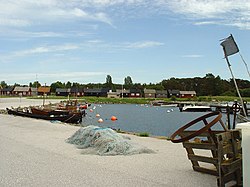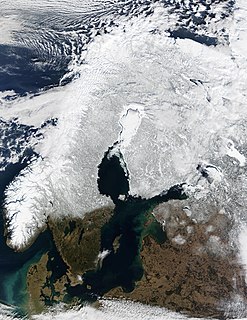
Slite is a locality situated in Gotland Municipality, Gotland County, on the island of Gotland, Sweden with 1,500 inhabitants in 2014.

Västerhejde is a locality on the Swedish island of Gotland.

Fleringe is a populated area, a socken, on the Swedish island of Gotland. It comprises the same area as the administrative Fleringe District, established on 1 January 2016.

Lokrume is a populated area, a socken, on the Swedish island of Gotland. It comprises the same area as the administrative Lokrume District, established on 1 January 2016.

Lummelunda is a populated area, a socken, on the Swedish island of Gotland. It comprises the same area as the administrative Lummelunda District, established on 1 January 2016.

Stenkyrka is a populated area, a socken, on the Swedish island of Gotland. It comprises the same area as the administrative Stenkyrka District, established on 1 January 2016.
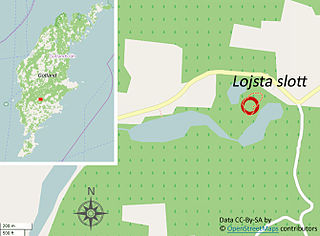
Lojsta Castle in Stånga socken on the border of Lojsta, Gotland, Sweden, is, despite its name, not a "castle" in the normal sense, i.e. it is not a palacelike manor. It is the ruins of a once fortified estate, consisting of houses surrounded by a wall and a moat.

Lojsta is a populated area, a socken, on the Swedish island of Gotland. It comprises the same area as the administrative Lojsta District, established on 1 January 2016.

Lau is a populated area, a socken, on the Swedish island of Gotland. It comprises the same area as the administrative Lau District, established on 1 January 2016. Originally an island, it is now part of the main Gotland island due to the isostasy. It is mostly known for the good water from the spring Lau Käldu.

Burs is a populated area, a socken, on the Swedish island of Gotland. It comprises the same area as the administrative Burs District, established on 1 January 2016. As of 2015, Gustaf Edman from Burs was probably Sweden's tallest man.

Eskelhem is a populated area, a socken, on the Swedish island of Gotland. The area is rural with farms. It comprises the same area as the administrative Eskelhem District, established on 1 January 2016.

Hamra is a populated area, a socken, on the Swedish island of Gotland. It comprises the same area as the administrative Hamra District, established on 1 January 2016.

Rone is a populated area, a socken, on the Swedish island of Gotland. It comprises the same area as the administrative Rone District, established on 1 January 2016.
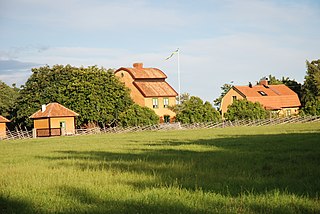
Östergarn is a populated area, a socken, on the Swedish island of Gotland. It comprises the same area as the administrative Östergarn District, established on 1 January 2016.

Västergarn is a populated area, a socken, on the Swedish island of Gotland. It comprises the same area as the administrative Västergarn District, established on 1 January 2016.

Alskog is a populated area, a socken, on the Swedish island of Gotland. It comprises the same area as the administrative Alskog District, established on 1 January 2016.

Boge is a populated area, a socken, on the Swedish island of Gotland. It comprises the same area as the administrative Boge District, established on 1 January 2016.

Buttle is a populated area, a socken, on the Swedish island of Gotland. It comprises the same area as the administrative Buttle District, established on 1 January 2016.
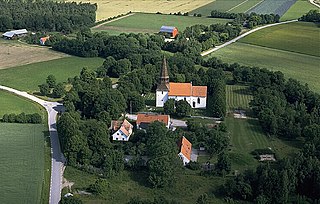
Hogrän is a populated area, a socken, on the Swedish island of Gotland. It comprises the same area as the administrative Hogrän District, established on 1 January 2016.
